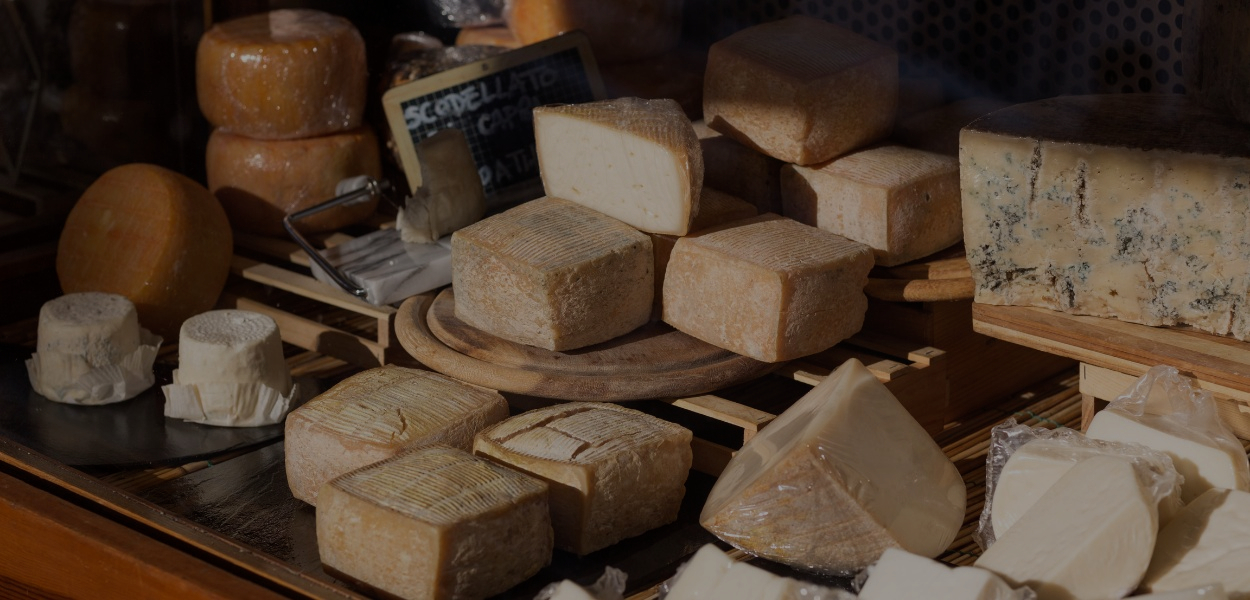The best cheeses in the world?
Italy dominates the chart.
Stay tuned as several Italian cheese-themed events await you in the UK, together with special guests.


The best cheeses in the world?
Italy dominates the chart.
Stay tuned as several Italian cheese-themed events await you in the UK, together with special guests.

IT’S OFFICIAL:
ITALIAN TRADE AGENCY IS THE EXCLUSIVE INTERNATIONAL AMBASSADOR AT THE UK’S LARGEST CHEESE, FOOD & DRINKS FESTIVAL.
We are honoured to represent the country’s best cheese and dairy producers with a booth of 150 square metres at the prestigious “Love Cheese Live” Exhibition which will take place will take place from 30 June - 1 July 2023 at the Staffordshire Show Ground.
The event is expected to attract over 6,000 visitors from across the UK.
Come to see our Cheese Masterclass hosted by leading cheese expert Charlie Turnbull who will educate both trade and consumers on the quality and provenance of Italian cheese.
Be part of excellence at its best!
Mozzarella di Bufala & Tomatoes
A delicious Italian Marriage
The bond between the two jewels of Italy renowned all over the world stems from the close connection between territory and culture. It is the result of its commitment to consumers, to the quality and desire to boost the value of “Made in Italy” on international markets.
Click HERE to learn about a tasty recipe that uses mozzarella.
To learn more about mozzarella:
https://www.mozzarelladop.it/
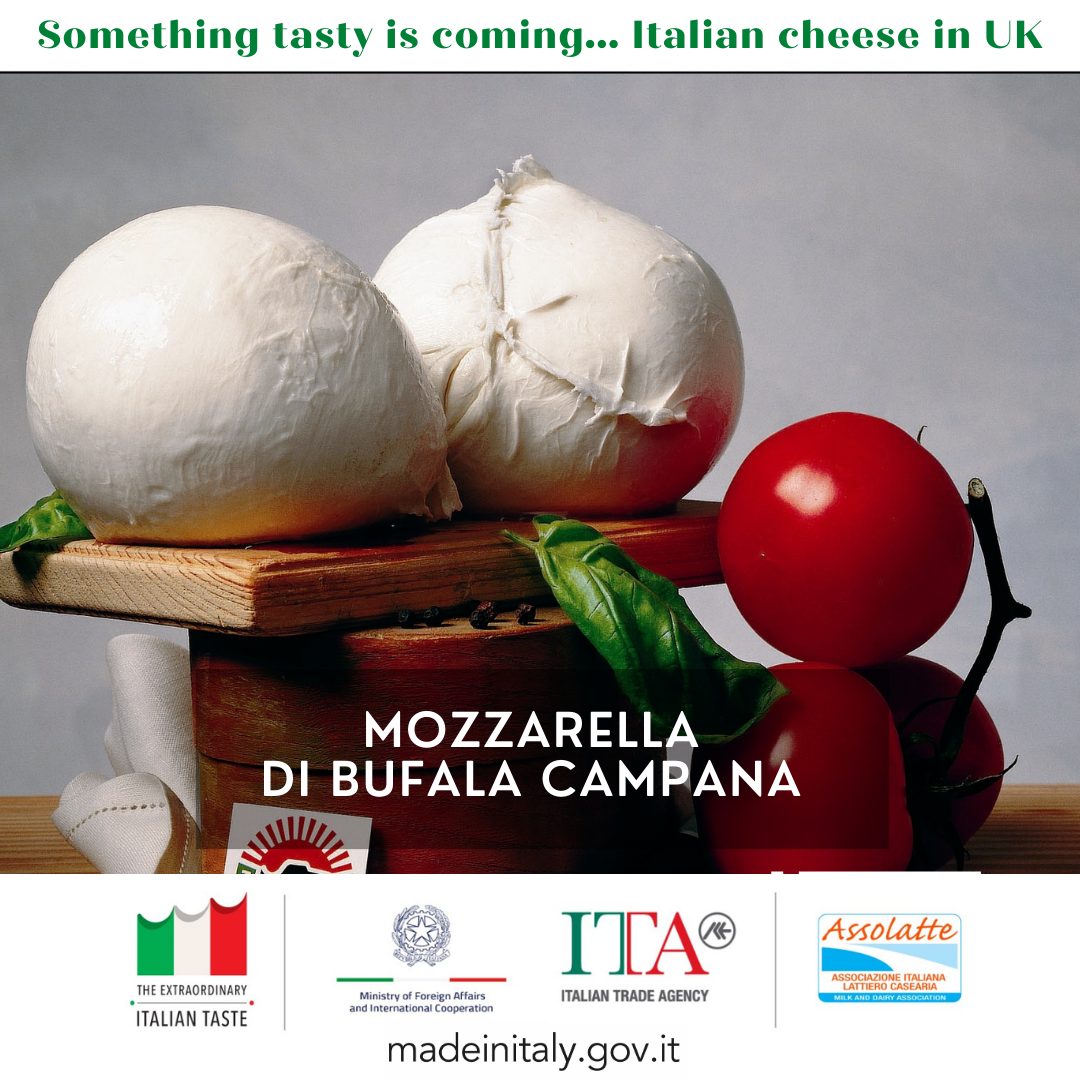
Mozzarella di Bufala & Tomatoes
A delicious Italian Marriage
The bond between the two jewels of Italy renowned all over the world stems from the close connection between territory and culture. It is the result of its commitment to consumers, to the quality and desire to boost the value of “Made in Italy” on international markets.
Click HERE to learn about a tasty recipe that uses mozzarella.
To learn more about mozzarella:
https://www.mozzarelladop.it/

Taleggio is a semisoft, washed-rind, smear-ripened Italian cheese that is named after Val Taleggio.
The cheese has a thin crust and a strong aroma, but its flavour is comparatively mild with an unusual fruity tang.
The origins of Taleggio cheese are very old, probably previous to the X Century B.C.
At that time the valley dwellers began producing this cheese out of the need to preserve the milk left over from home
consumption and were aged in local caves or casere.
The production of the cheese has progressively extended to the Po Valley.
Taleggio cheese has been approved by the European Union in 1996 as P.D.O. Cheese (Protected Designation Origin Cheese). Being a P.D.O. Cheese, it has to be produced and aged only in the origin area, comprising in Lombardy, the provinces of Bergamo, Brescia, Como, Cremona, Lecco, Lodi, Milan and Pavia.
In Piedmont, the origin area comprises Novara; in Veneto, the province of Treviso. The milk too has to come purely from the area of origin.
Click HERE to learn about a tasty recipe that uses taleggio.
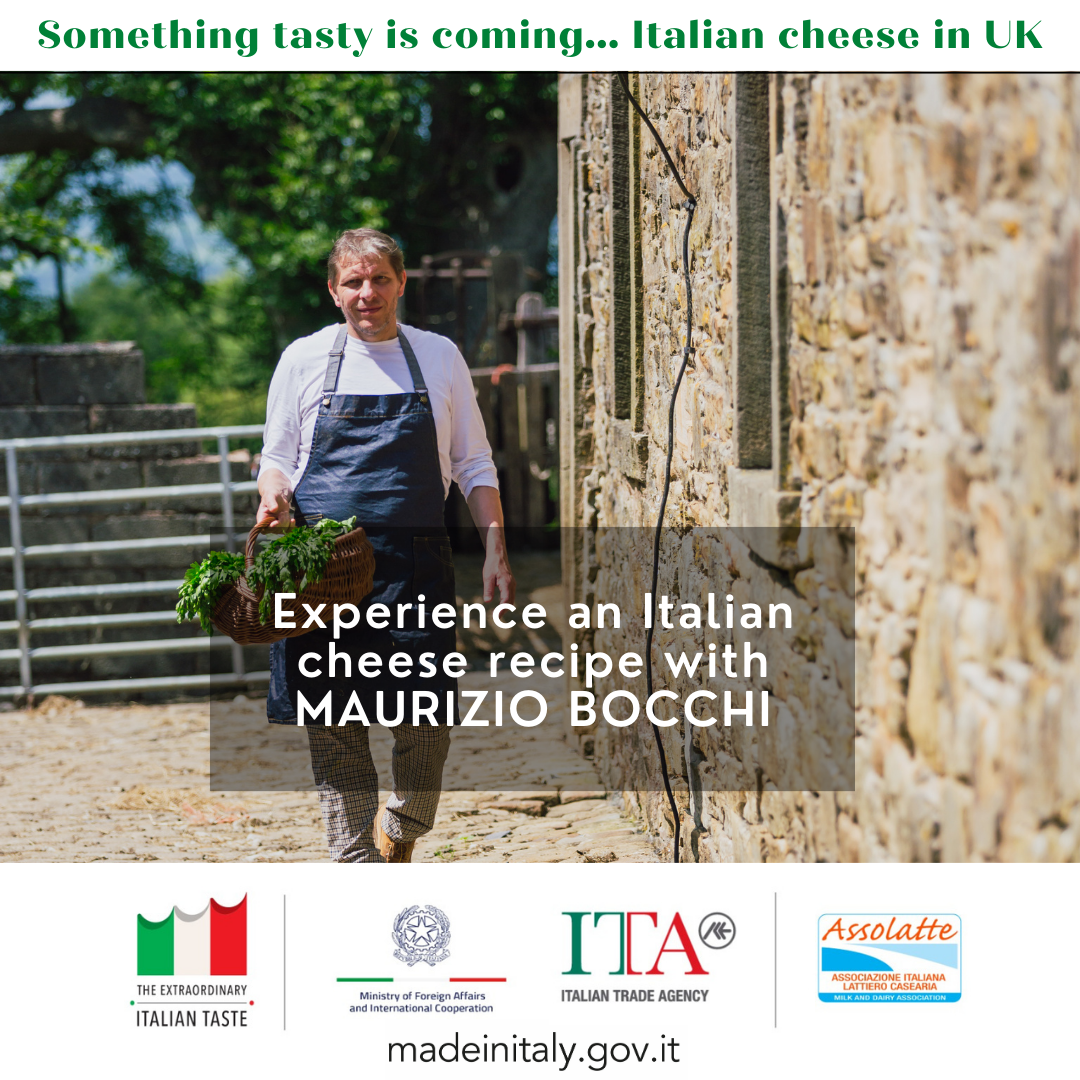
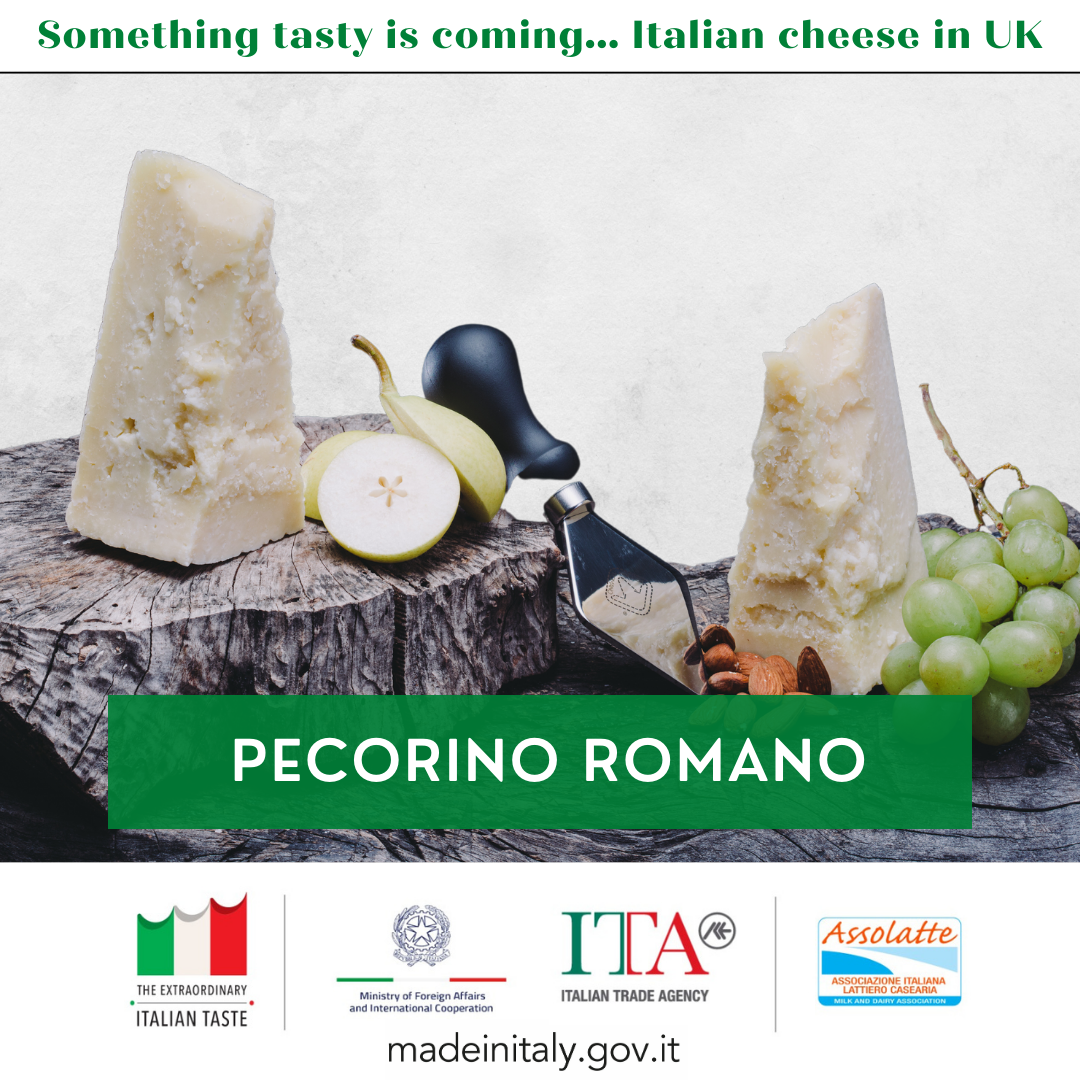
The history of Pecorino Romano dates back thousands of years. Even as far back as 48 AD
Writing on nutrition, Virgil tells us that the daily consumption allocated to each soldier was 27 grams each day.
Today, Pecorino Romano PDO is made in Lazio, Sardinia and in the province of Grosseto – territories with ideal conditions for its production: indigenous breeds of cows, and unspoilt pastures that are rich in herbs that give the cheese its characteristically intense flavour.
The taste is fragrant, slightly spicy and full-bodied as a table cheese; intensely spicy with varied tastes once grated.
The maturation period is about 5 months for table Pecorino Romano; 8 months for the grated variety.
Click HERE to learn about a tasty recipe that uses Pecorino Romano.
Diego started working in his local restaurant when he was just 14 years old, then moved to Paris and pursued his culinary career under the guidance of Alain Ducasse.
Emily was born and raised in London, her passion for food started at a young age and she dedicated her life to culinary excellence.
Come and meet them during our event, where they will try their hand at preparing delicacies with local products.


Diego started working in his local restaurant when he was just 14 years old, then moved to Paris and pursued his culinary career under the guidance of Alain Ducasse.
Emily was born and raised in London, her passion for food started at a young age and she dedicated her life to culinary excellence.
Come and meet them during our event, where they will try their hand at preparing delicacies with local products.
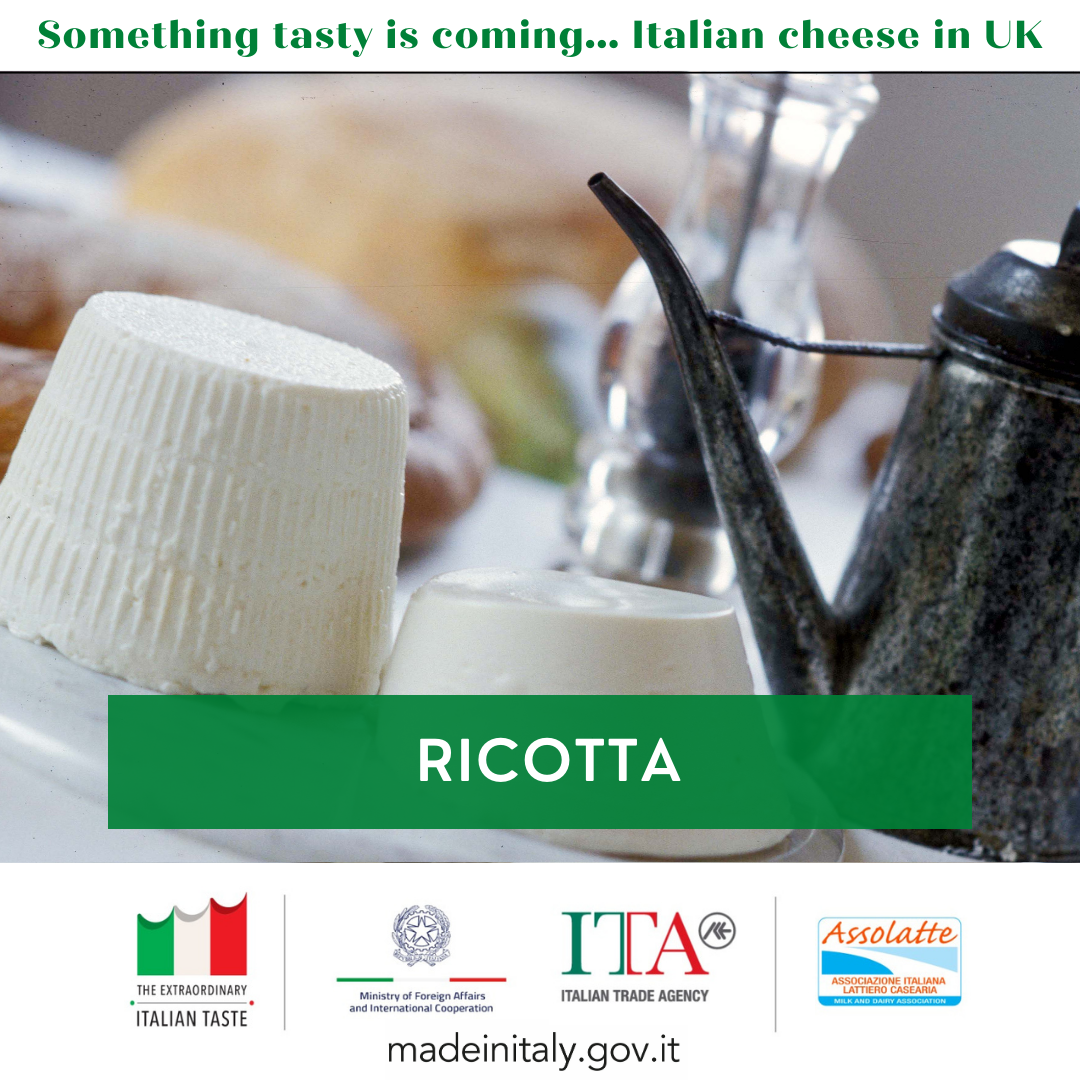
Fresh or seasoned, from cow, sheep, goat or buffalo, ricotta is one of the fresh "cheeses" most appreciated by consumers.
Ricotta translates to "recooked" in Italian.
It is a traditional recipe.
Ricotta is sometimes called a poor man's cheese, but in its cheese manufacture process, we use leftover whey from other cheese rich in precious nutrients.
Thanks to its sweet taste and versatility, it has been used in hundreds of recipes in every region of Italy, from the simplest to the most elaborate, from first courses to desserts.
Click HERE to learn about a tasty recipe that uses Ricotta.


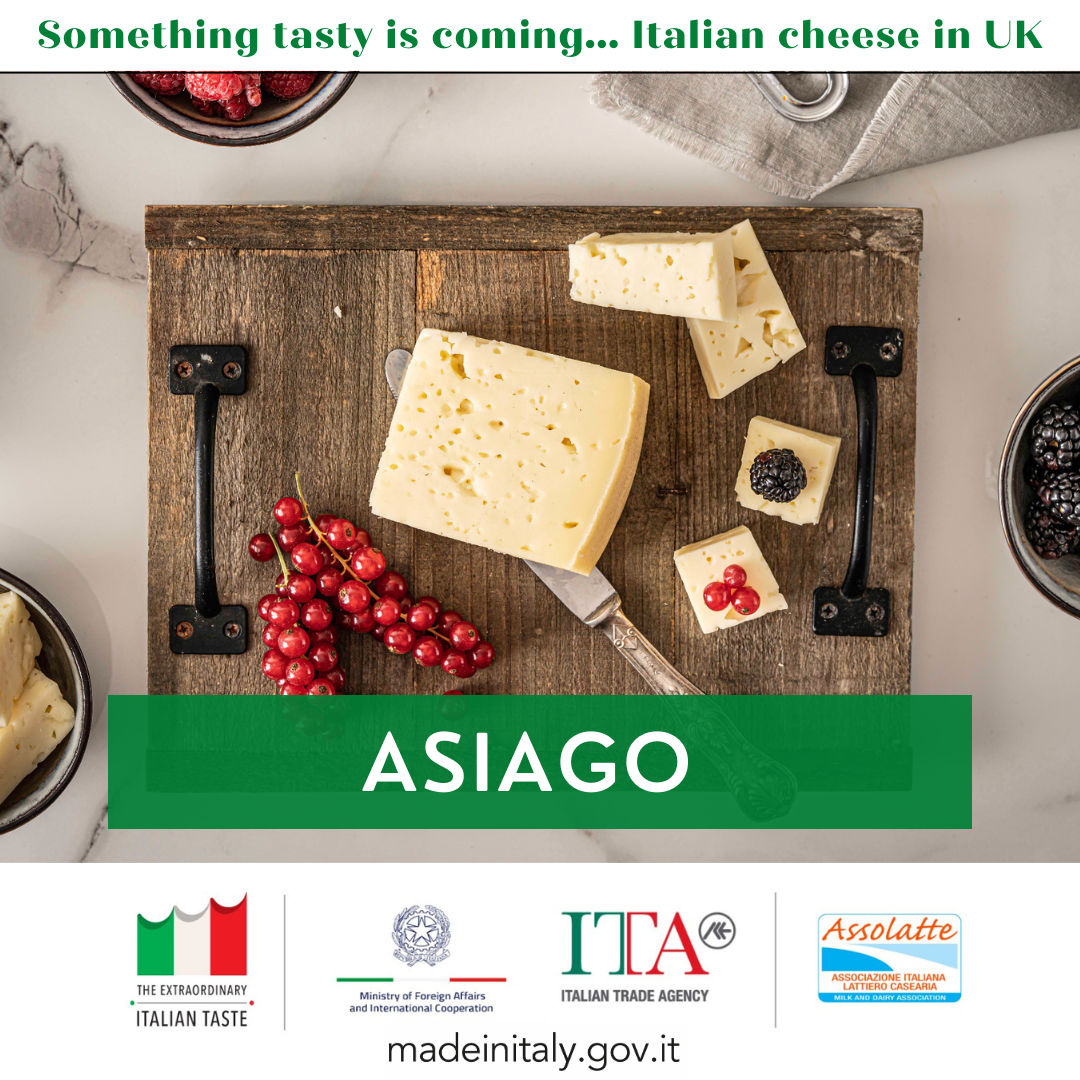
In the Asiago plateau, from which Asiago cheese takes its name, a tasty cheese has been produced ever since the year 1000.
Initially, sheep’s milk was used, but from the 1500s, with the gradual increase of cattle farming on the plateau, cow’s milk became the raw material used.
The area from which milk is obtained and in which Asiago PDO cheese is produced comprises four provinces: Vicenza, Trento and part of Padua and Treviso.
Asiago cheese that is produced entirely at an altitude above 600 metres and with milk from farms within this area may also bear the distinction “product of the Mountain”.
Only Asiago cheese produced within this area is authentic Asiago dop.
Fresh Asiago is a cheese with a young flavour and a taste of milk fresh from the cow, melting in the mouth to release sweet and slightly sour notes.
Click HERE to learn about a tasty recipe that uses Asiago.
Burrata is a stringy cheese typical of the Puglia region, although it is currently produced in a large part of the south.
The Burrata is in fact composed of a soft wrapper of stretched curd and a heart of Stracciatella, i.e. the stretched curd drawn by hand and added with cream.
Burrata was born in Andria, in the Puglia region, originally to preserve cream and stracciatella.
Click HERE to learn about a tasty recipe that uses Burrata.
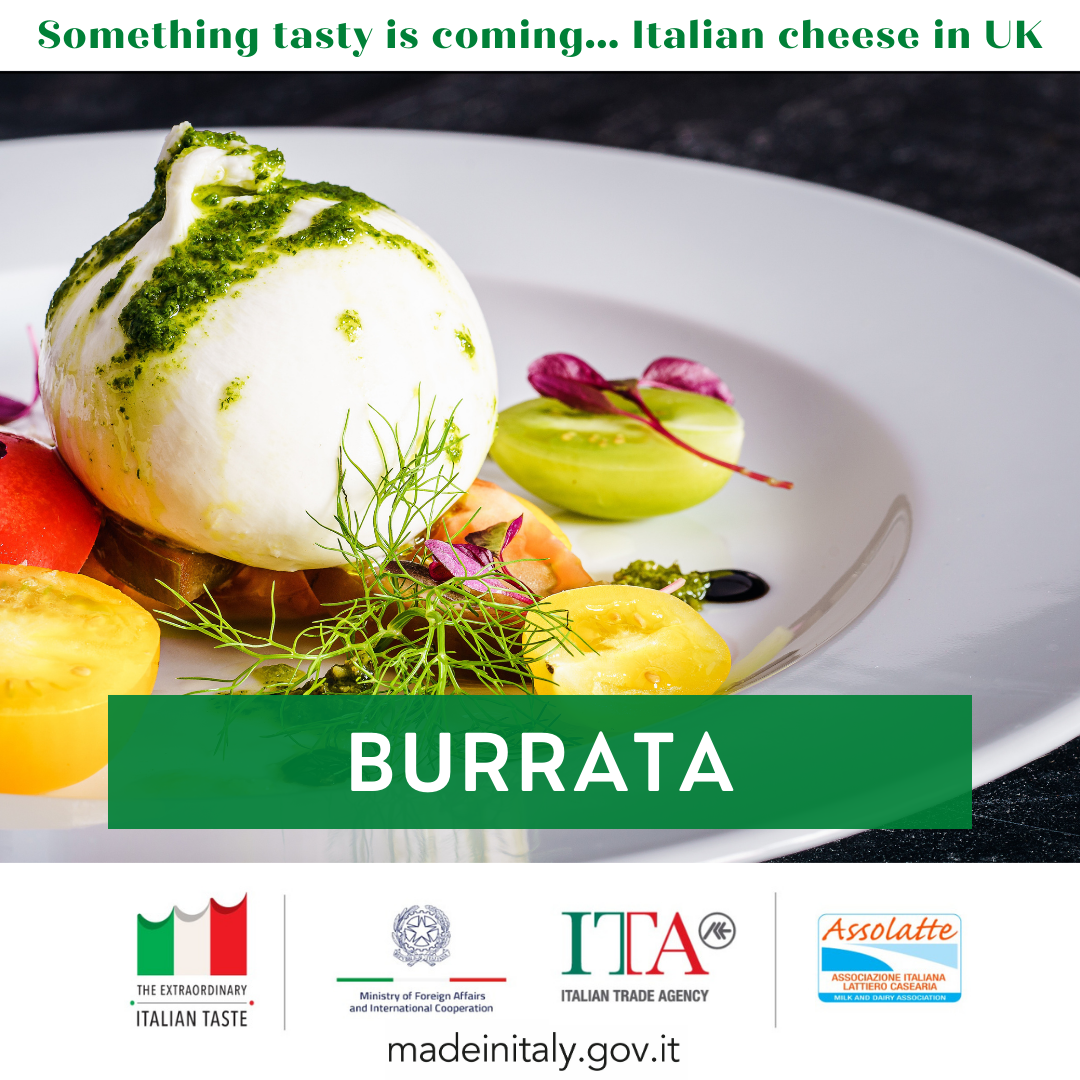

Burrata is a stringy cheese typical of the Puglia region, although it is currently produced in a large part of the south.
The Burrata is in fact composed of a soft wrapper of stretched curd and a heart of Stracciatella, i.e. the stretched curd drawn by hand and added with cream.
Burrata was born in Andria, in the Puglia region, originally to preserve cream and stracciatella.
Click HERE to learn about a tasty recipe that uses Burrata.
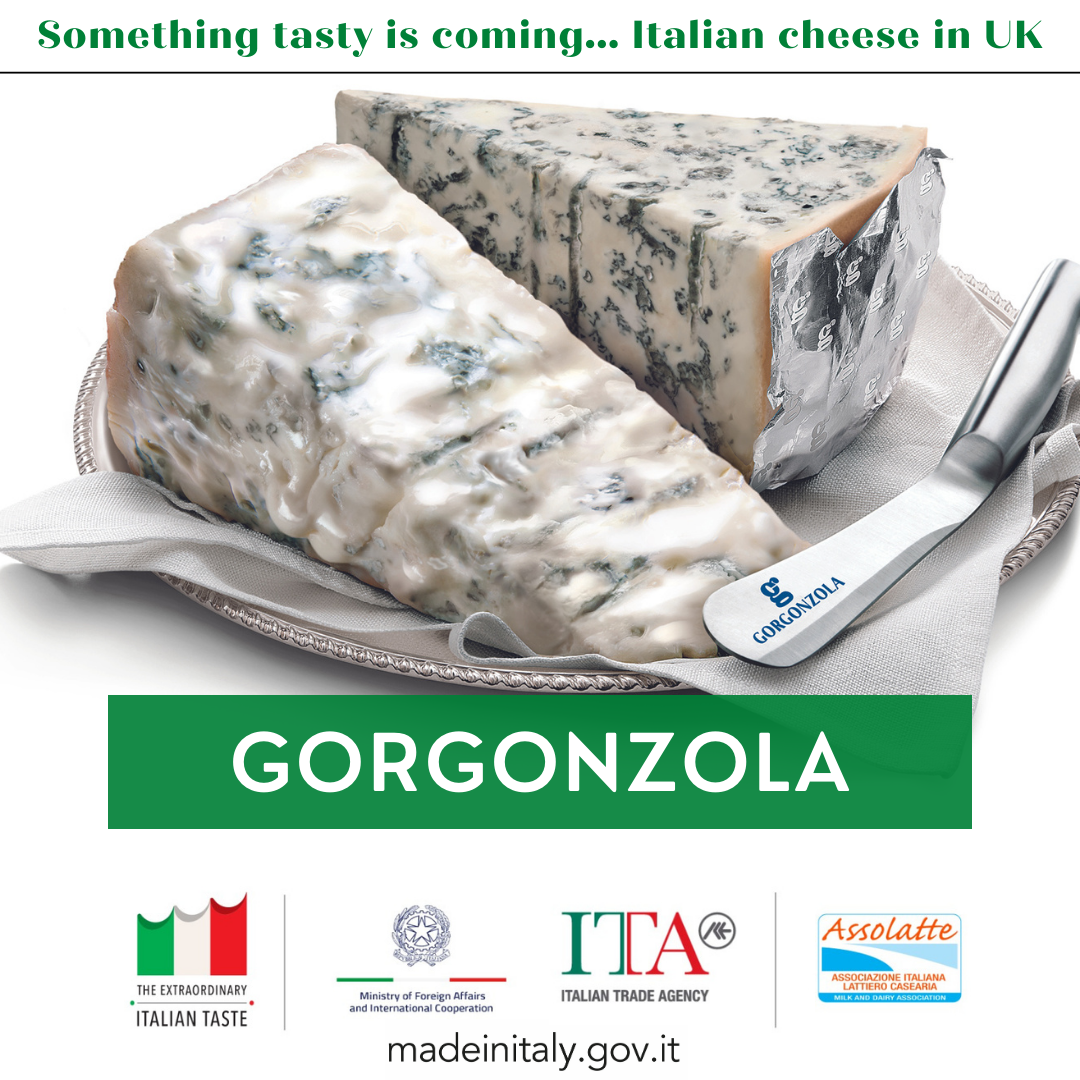
History: this cheese takes its name from the village of Gorgonzola, on the outskirts of Milan.
Legend has it that this cheese was made there for first time in 879 A.d.
Area of production: for the region of Piedmont these provinces are: Novara, Vercelli, Cuneo, Biella and Casale Monferrato with its surroundings, whereas for the region of Lombardy the provinces are: Bergamo, Brescia, Como, Cremona, Lecco, Lodi, Milano, Monza, Pavia e Varese.
Characteristics: it is a raw marbled, soft cheese with a white to straw colour, and characteristic green-blue veining.
Soft ad creamy, it has a typically sharp, tasty flavour ; its strength varying according to variety.
Produced exclusively from whole cow’s milk pasteurized with the addition of milk enzymes and selected moulds which give it its typical veining.
The mild variety is ripened for at least two months, while the stronger variety is aged for more than three months.
Click HERE to learn about a tasty recipe that uses Gorgonzola PDO.
Nearly a 1000 years ago, the Cistercian monks from the fertile po Valley, in North of italy, developed an original recipe to use the excess milk produced in the area.
It is thought to have been first made in the Abbey of Chiaravalle in 1135.
Due to its grainy structure, so different from all other cheeses, it was given the name “GRANA”.
The ageing process lasts for a minimum of 9 to over 24 months. At 9 months, each wheel is carefully tested for appearance, aroma and texture.
This important step is carried out exclusively by the impartial expertise of the Consorzio Tutela Grana Padano (protection Consortium) technicians. only the best wheels receive the fi re-branded logo officially grading them GRANA PADANO PDO cheese.
Rich in nutrients and very digestible, it is an excellent and healthy choice for the whole family.
Grana Padano is a great choice for the whole family.
It contains proteins, vitamins, minerals and is a source of calcium Grana padano is the best selling PDO cheese in the world.
Click HERE to learn about a tasty recipe that uses Grana Padano.
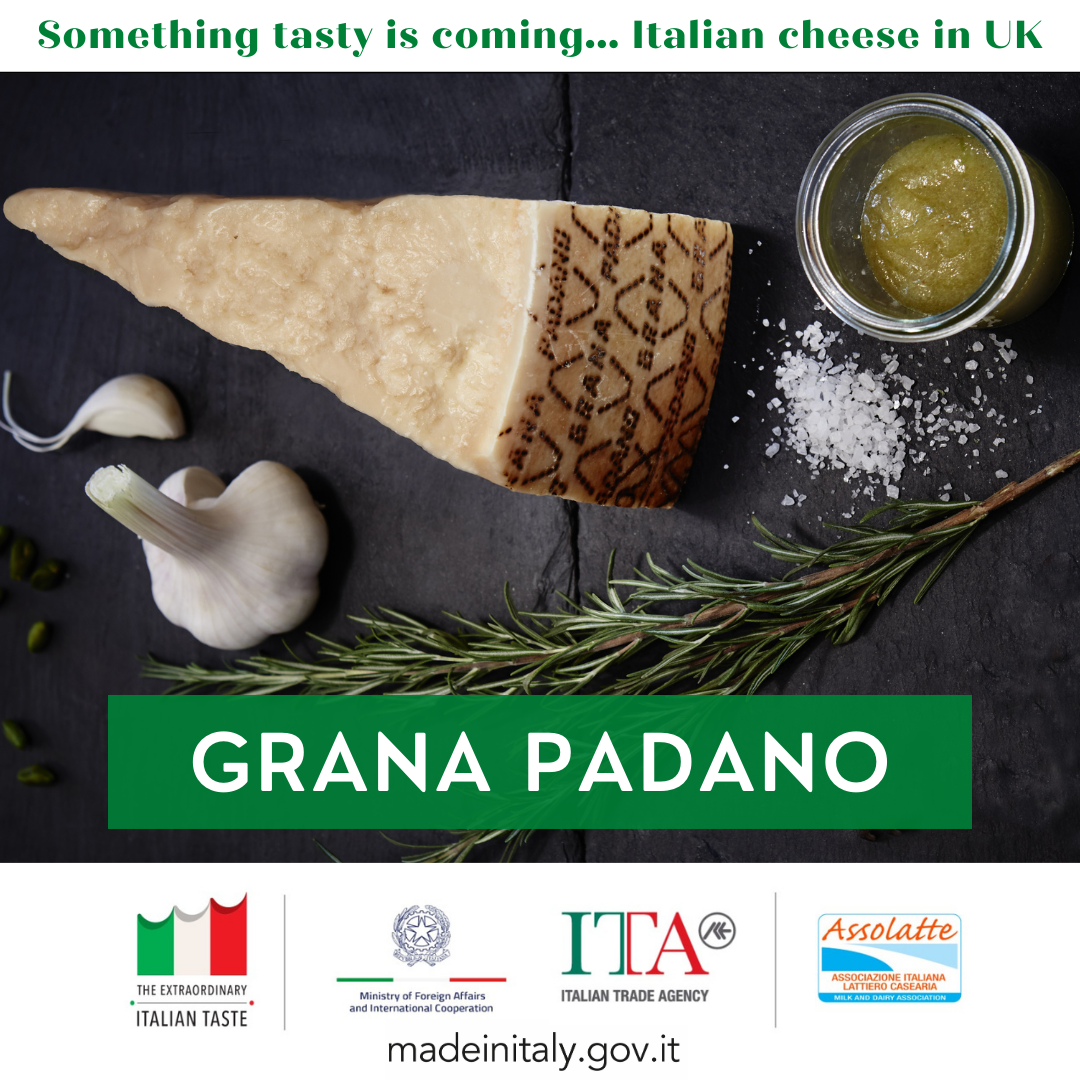

Nearly a 1000 years ago, the Cistercian monks from the fertile po Valley, in North of italy, developed an original recipe to use the excess milk produced in the area.
It is thought to have been first made in the Abbey of Chiaravalle in 1135.
Due to its grainy structure, so different from all other cheeses, it was given the name “GRANA”.
The ageing process lasts for a minimum of 9 to over 24 months. At 9 months, each wheel is carefully tested for appearance, aroma and texture.
This important step is carried out exclusively by the impartial expertise of the Consorzio Tutela Grana Padano (protection Consortium) technicians. only the best wheels receive the fi re-branded logo officially grading them GRANA PADANO PDO cheese.
Rich in nutrients and very digestible, it is an excellent and healthy choice for the whole family.
Grana Padano is a great choice for the whole family.
It contains proteins, vitamins, minerals and is a source of calcium Grana padano is the best selling PDO cheese in the world.
Click HERE to learn about a tasty recipe that uses Grana Padano.
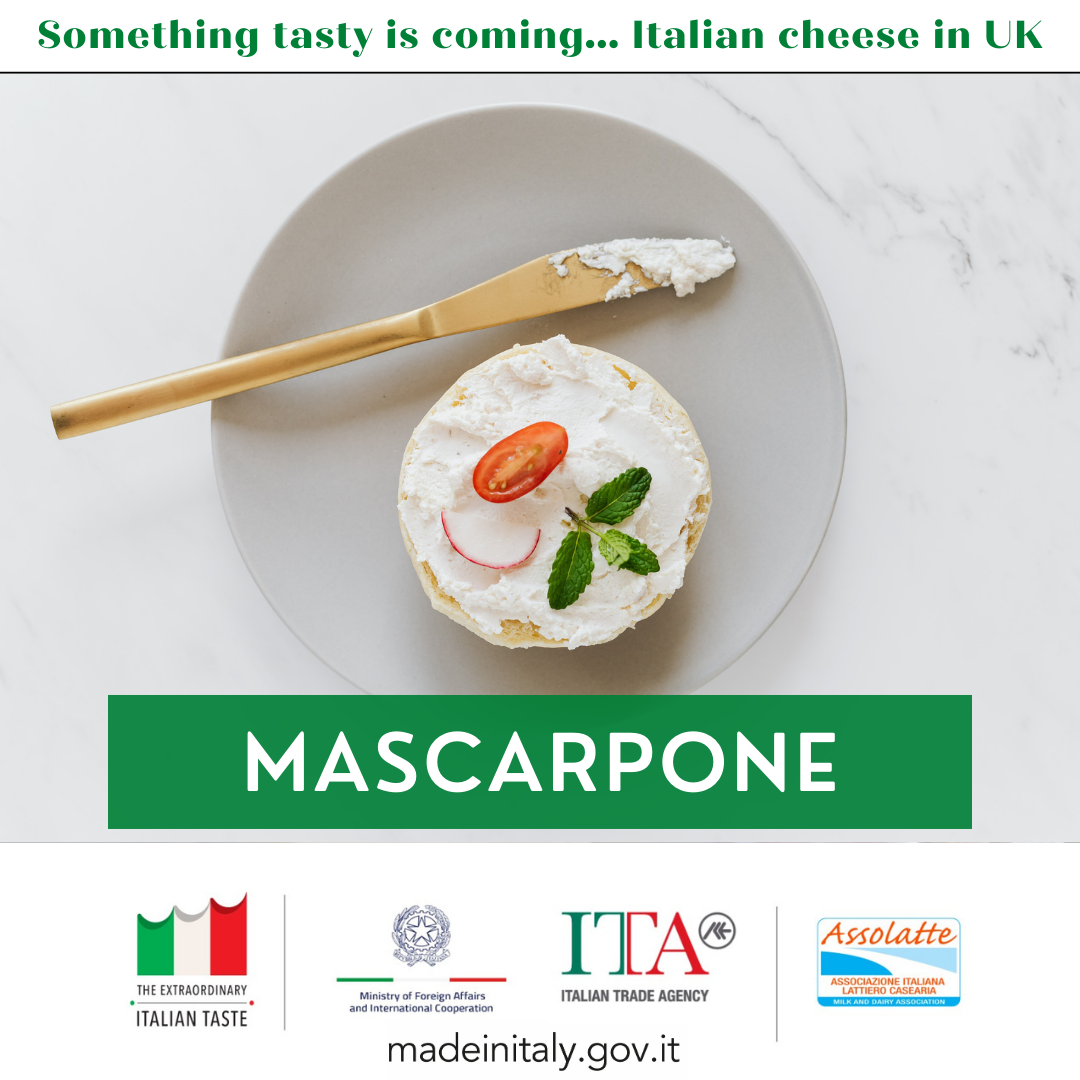
Mascarpone is a creamy cheese typical of the Lombardy region, and in particular of the Lodi area, with rather ancient and uncertain origins.
The theses on its origins are varied: it is certain that the first mention of this cheese was found in the book "Summa Lacticiniorum", which indicated a recipe with mascarpone, sugar and rose water.
According to some, its name derives from the Lombard dialect "mascherpa", which means milk cream or ricotta, while others attribute it to the exclamation "¡Mas que bueno! pronounced by a Spanish governor who was fascinated by it.
Click HERE to learn about a tasty recipe that uses Mascarpone.
Mozzarella is one of the best known Italian products in the world, thanks to its incredible goodness and its versatility in the kitchen, which allows it to be used for many different recipes.
What is mozzarella and how is it made?
Mozzarella is a stretched curd dairy product, also called fresh cheese, because after production it does not need any maturation or rest, and is in fact immediately ready for consumption.
This cheese is prepared with a high percentage of milk, as can be easily perceived by the taste of the mozzarella itself.
Click HERE to learn about a tasty recipe that uses Mozzarella.
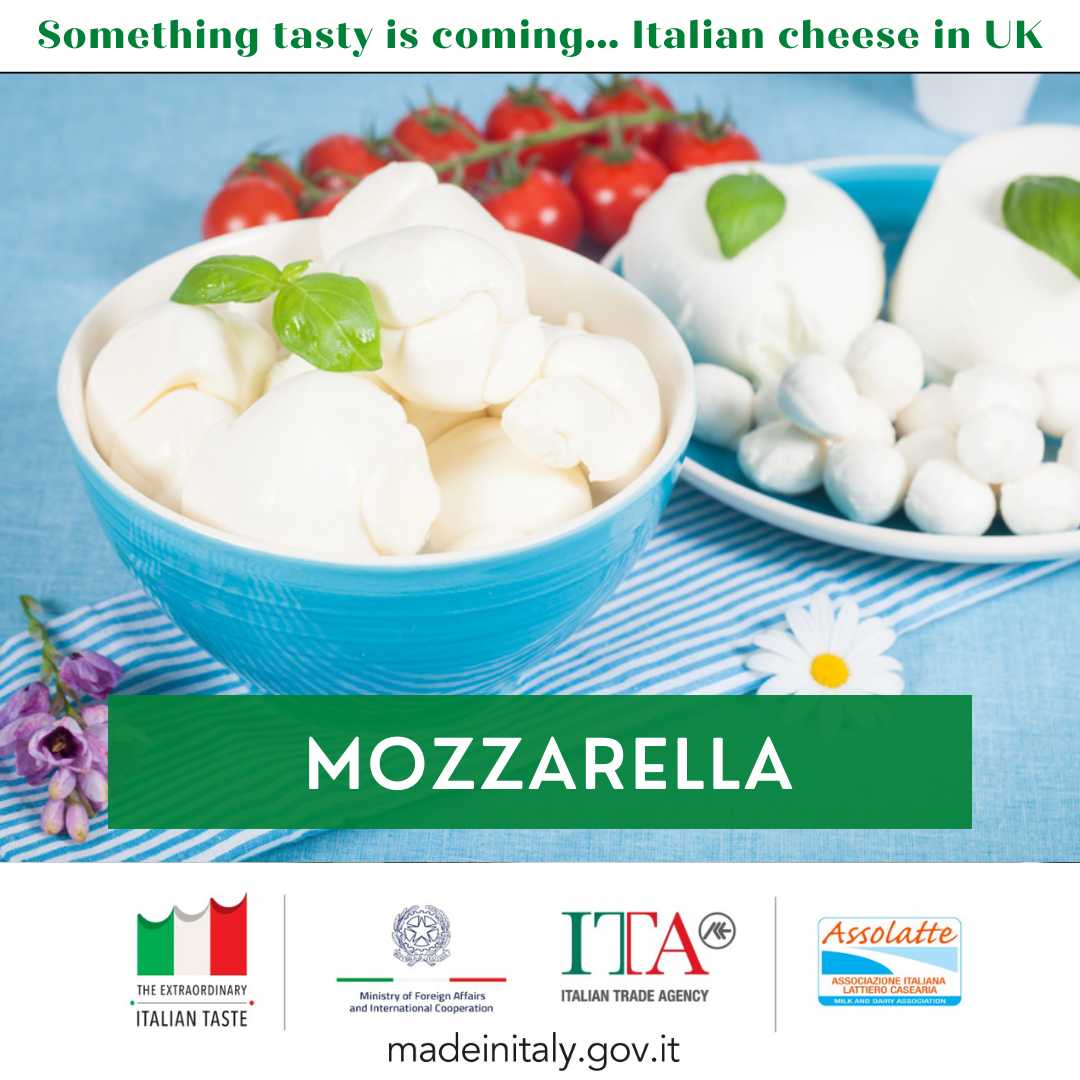

Mozzarella is one of the best known Italian products in the world, thanks to its incredible goodness and its versatility in the kitchen, which allows it to be used for many different recipes.
What is mozzarella and how is it made?
Mozzarella is a stretched curd dairy product, also called fresh cheese, because after production it does not need any maturation or rest, and is in fact immediately ready for consumption.
This cheese is prepared with a high percentage of milk, as can be easily perceived by the taste of the mozzarella itself.
Click HERE to learn about a tasty recipe that uses Mozzarella.
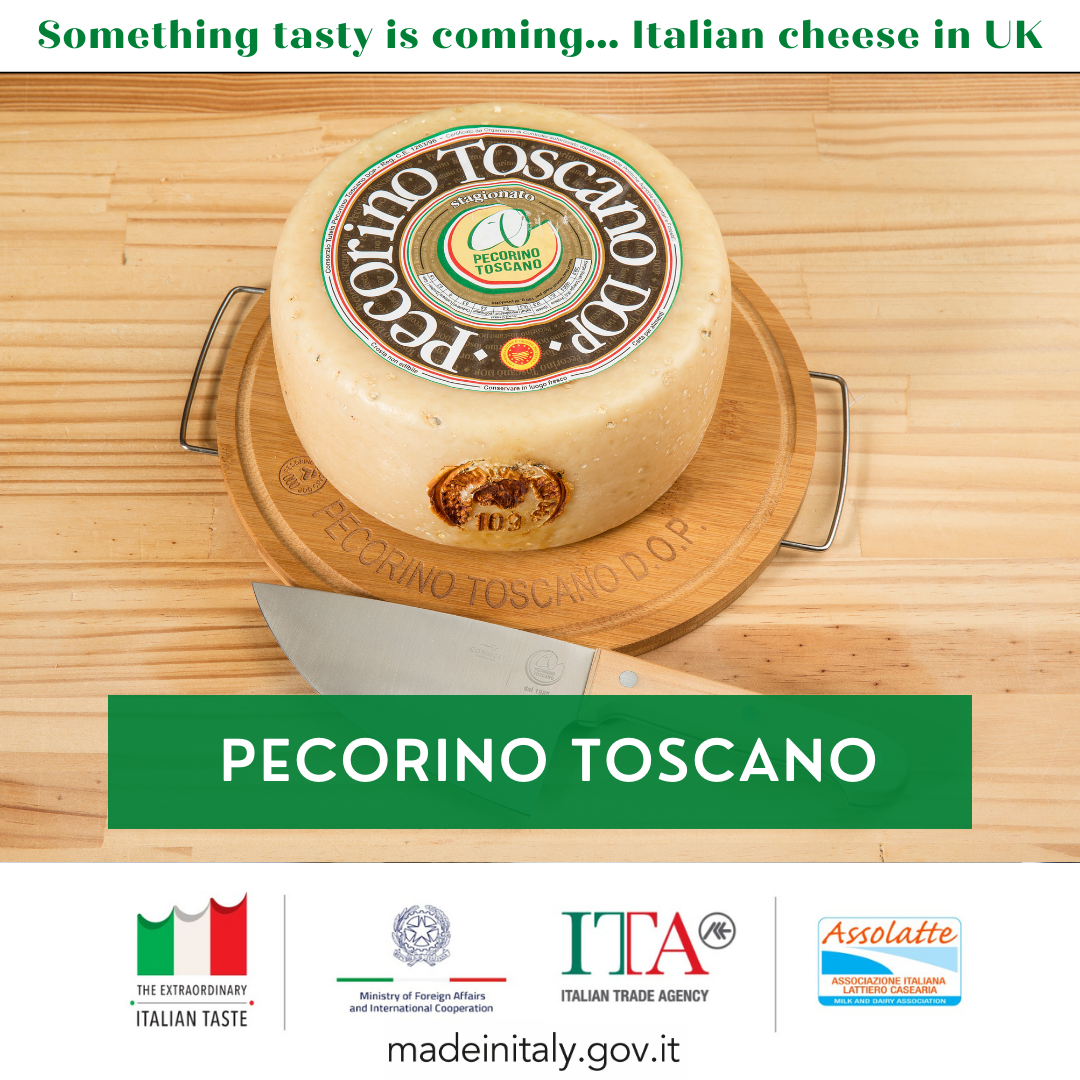
If sheep farming has remote origins in Tuscany, the same could be said for cheese produced with goat’s milk.
The Etruscans, for example, used vegetable rennet to produce huge cheeses that could feed a family for a long period.
Today, Pecorino Toscano PDO embodies the fl avours of thousands of years of Tuscan cheese making.
The cheese’s production area covers the whole Tuscan region as well as the communes of Allerona (TR), Castiglione del Lago (pG), Acquapendente, onano, San Lorenzo Nuovo, Grotte di Castro, Gradoli, Valentano, farnese, ischia di Castro, Montefi ascone, Bolsena e Capodimonte (VT).
Pecorino Toscano PDO is cylindrical in shape with curved edges.
The flavor is fragrant, unique, normally described as ‘sweet’ – longer maturation periods intensify the flavor and aroma and add to the piquancy.
Pecorino Toscano PDO should be kept at the bottom of the fridge.
It is better to wrap it in a cotton cloth, protecting where it is cut with cling film.
To enjoy it to the fullest, take it out of the fridge at least an hour before consumption.
Click HERE to learn about a tasty recipe that uses Pecorino Toscano.
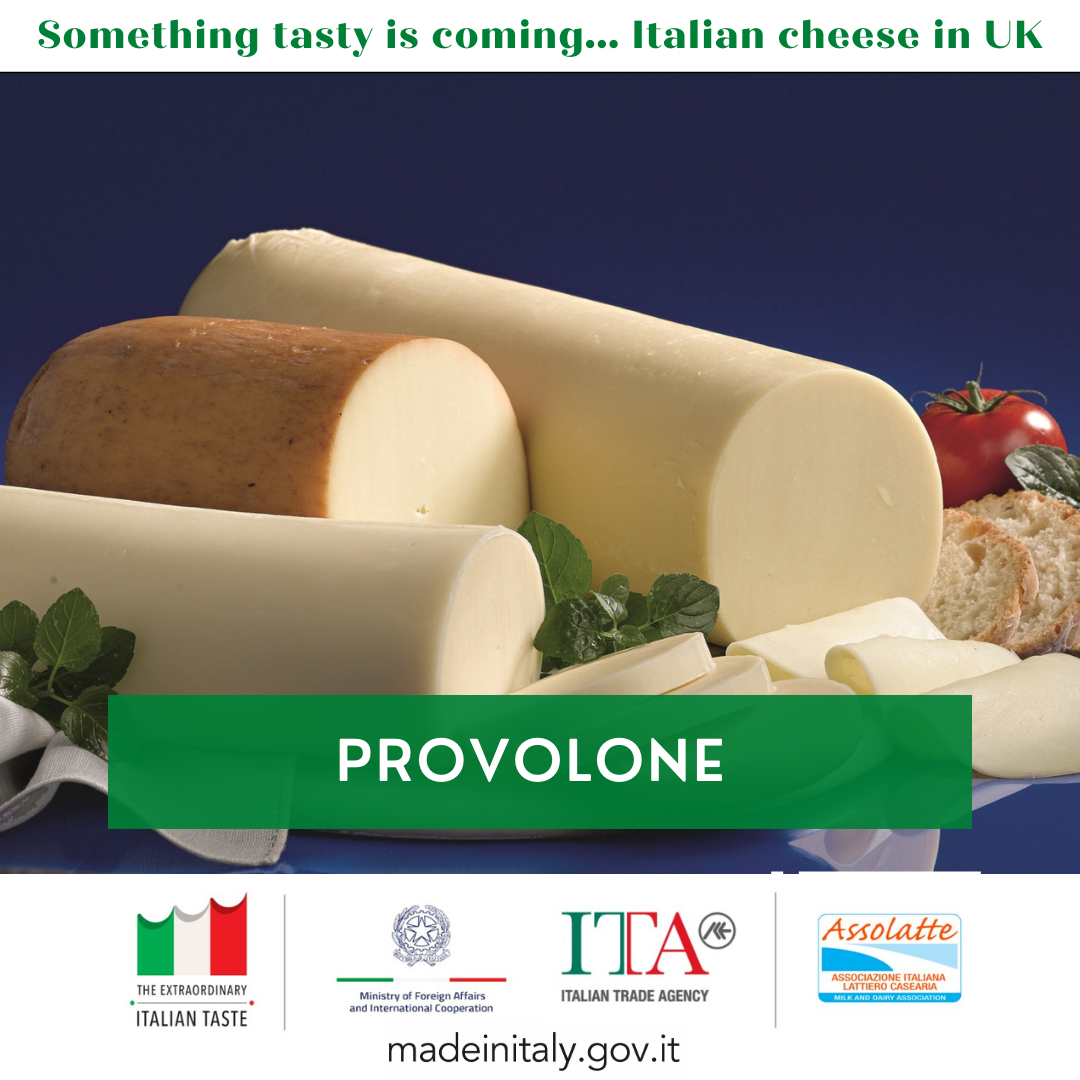
The name Provolone derives from the word Provola, which indicates a small stretched curd cheese.
This resembles it in some respects and not in others, such as the abundant size of the Provolone and above all for the flavour, clearly more decisive in its "older brother".
Another aspect for which Provolone differs from other stretched curd cheeses is for its remarkable quality of being able to mature for a long time, up to over a year, without drying out and without becoming a grating cheese.
Click HERE to learn about a tasty recipe that uses Provolone.
The name Provolone derives from the word Provola, which indicates a small stretched curd cheese.
This resembles it in some respects and not in others, such as the abundant size of the Provolone and above all for the flavour, clearly more decisive in its "older brother".
Another aspect for which Provolone differs from other stretched curd cheeses is for its remarkable quality of being able to mature for a long time, up to over a year, without drying out and without becoming a grating cheese.
Click HERE to learn about a tasty recipe that uses Provolone.


Parmigiano Reggiano is one of the oldest and richest cheeses known in the world. i
It is still produced as it was nine centuries ago: same ingredients, same processing technique and same artisan care.
Its documented origins date back to the 13th century.
This protected designation of origin product is a cooked and non-pressed cheese with a hard and slowly matured paste.
It is made only from raw milk, rennet and salt in a specific area of origin (provinces of parma, Reggio Emilia, Modena, Mantua on the right bank of the po river and Bologna on the left side of the Reno river), following artisan methods specified in the production Regulation agreed by EU.
Its properties are numerous and all of them linked to intrinsic product features: high digestibility, high calcium content, absence of preservatives or additives, richness in mineral elements, pleasantness and organoleptic appreciation.
Its minimum maturation is 12 months, but only when it reaches approximately 24 months of age or more it expresses its best.
Click HERE to learn about a tasty recipe that uses Parmigiano.
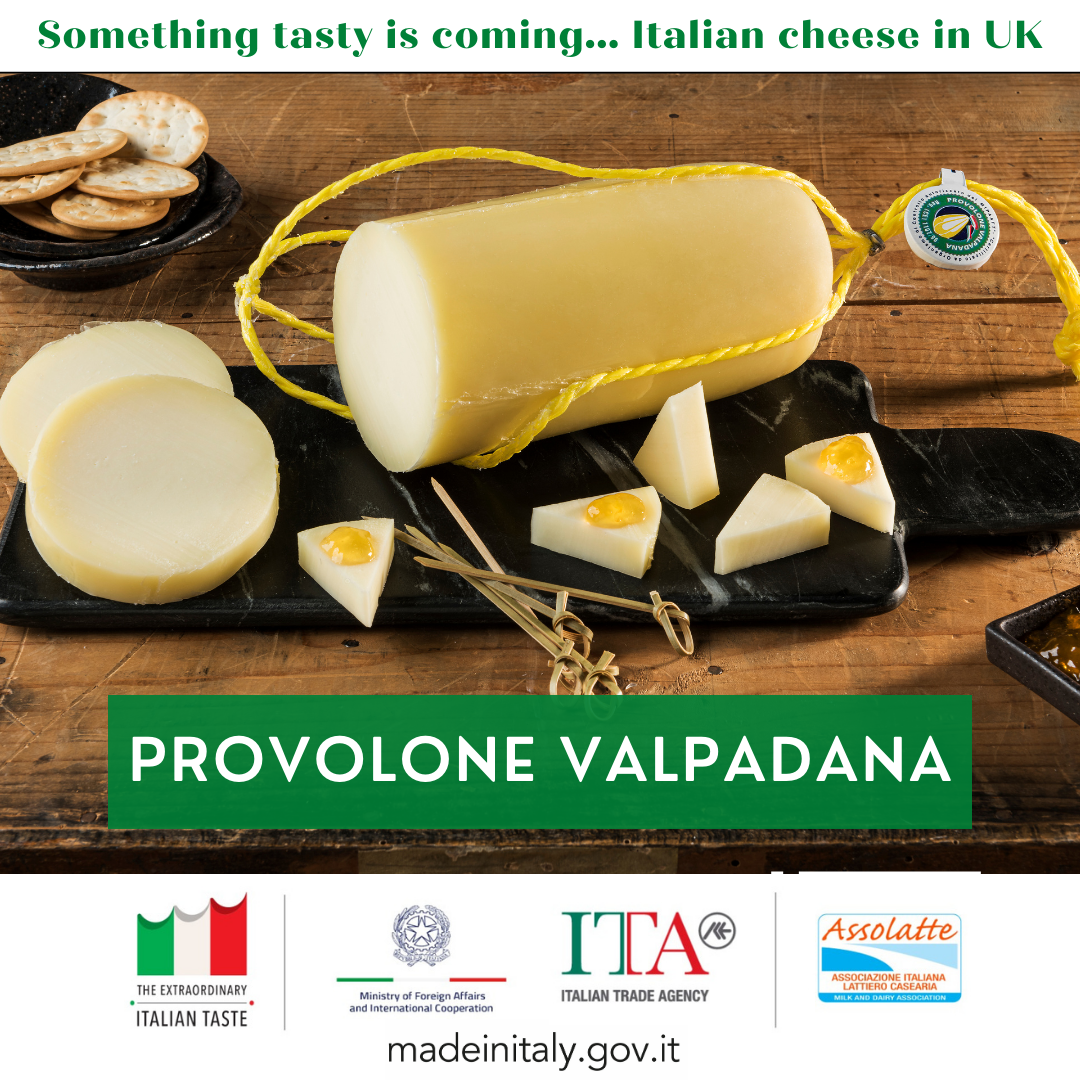
Provolone Valpadana emerged during the second half of the 19 century, born out of a happy marriage between the range of stretched curd cheeses coming from the south of italy, and the dairy vocation of Val padana.
The term ‘provolone Valpadana’ appeared in literature for the first time in 1871, in the ‘Agriculture Vocabulary of Canevazzi-Mancini’ (cappelli, 1871).
‘Provolone Valpadana’ means ‘large provola’ (oblong-shaped cheese).
‘Valpadana’ became associated with ‘provolone Valpadana’ in 1993 (dpCM 09.04.1993) at the crowning of a secular tradition that determined the characteristics for which the cheese is known and appreciated.
Provolone Valpadana must be made in the provinces of Cremona, Brescia, Verona, Vicenza, Rovigo, padova or piacenza and in parts of the provinces of Bergamo, Mantova, Lodi e Trento.
Provolone Valpadana is a semi-hard stretched curd cheese with a smooth rind, obtained using cow’s milk at natural fermentation acidity.
The cheese is completely original, distinguishable from other stretched curd cheeses by its large dimensions, capacity to mature for long periods without drying out and, therefore, tendency to not become a cheese for grating.
There are two types of provolone Valpadana: • Sweet, which has a delicate taste.
• Sharp, which has a more decisive taste.
Click HERE to learn about a tasty recipe that uses Provolone Valpadana.
Provolone Valpadana emerged during the second half of the 19 century, born out of a happy marriage between the range of stretched curd cheeses coming from the south of italy, and the dairy vocation of Val padana.
The term ‘provolone Valpadana’ appeared in literature for the first time in 1871, in the ‘Agriculture Vocabulary of Canevazzi-Mancini’ (cappelli, 1871).
‘Provolone Valpadana’ means ‘large provola’ (oblong-shaped cheese).
‘Valpadana’ became associated with ‘provolone Valpadana’ in 1993 (dpCM 09.04.1993) at the crowning of a secular tradition that determined the characteristics for which the cheese is known and appreciated.
Provolone Valpadana must be made in the provinces of Cremona, Brescia, Verona, Vicenza, Rovigo, padova or piacenza and in parts of the provinces of Bergamo, Mantova, Lodi e Trento.
Provolone Valpadana is a semi-hard stretched curd cheese with a smooth rind, obtained using cow’s milk at natural fermentation acidity.
The cheese is completely original, distinguishable from other stretched curd cheeses by its large dimensions, capacity to mature for long periods without drying out and, therefore, tendency to not become a cheese for grating.
There are two types of provolone Valpadana: • Sweet, which has a delicate taste.
• Sharp, which has a more decisive taste.
Click HERE to learn about a tasty recipe that uses Provolone Valpadana.


